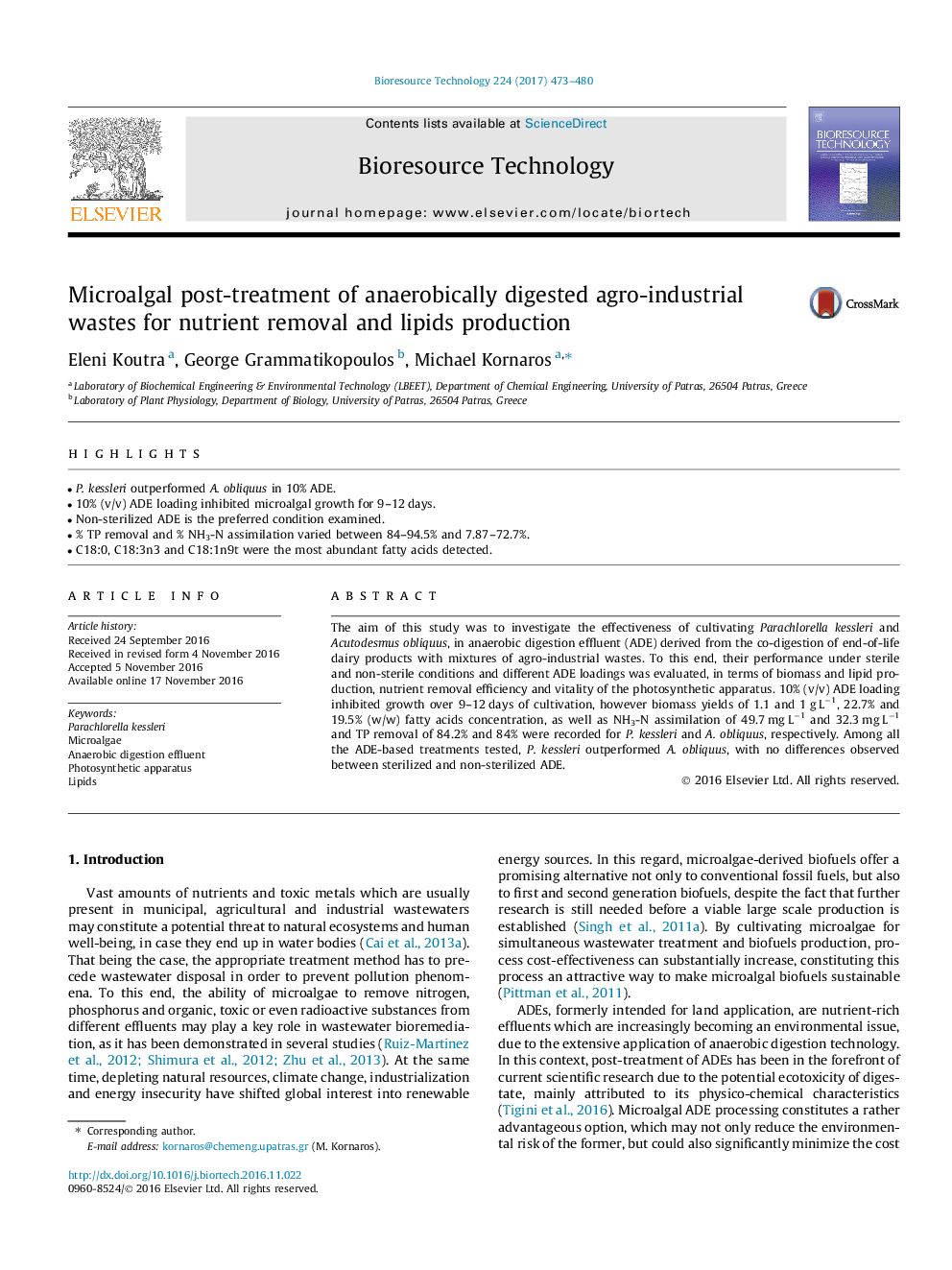| Article ID | Journal | Published Year | Pages | File Type |
|---|---|---|---|---|
| 4997867 | Bioresource Technology | 2017 | 8 Pages |
â¢P. kessleri outperformed A. obliquus in 10% ADE.â¢10% (v/v) ADE loading inhibited microalgal growth for 9-12 days.â¢Non-sterilized ADE is the preferred condition examined.â¢% TP removal and % NH3-N assimilation varied between 84-94.5% and 7.87-72.7%.â¢C18:0, C18:3n3 and C18:1n9t were the most abundant fatty acids detected.
The aim of this study was to investigate the effectiveness of cultivating Parachlorella kessleri and Acutodesmus obliquus, in anaerobic digestion effluent (ADE) derived from the co-digestion of end-of-life dairy products with mixtures of agro-industrial wastes. To this end, their performance under sterile and non-sterile conditions and different ADE loadings was evaluated, in terms of biomass and lipid production, nutrient removal efficiency and vitality of the photosynthetic apparatus. 10% (v/v) ADE loading inhibited growth over 9-12 days of cultivation, however biomass yields of 1.1 and 1 g Lâ1, 22.7% and 19.5% (w/w) fatty acids concentration, as well as NH3-N assimilation of 49.7 mg Lâ1 and 32.3 mg Lâ1 and TP removal of 84.2% and 84% were recorded for P. kessleri and A. obliquus, respectively. Among all the ADE-based treatments tested, P. kessleri outperformed A. obliquus, with no differences observed between sterilized and non-sterilized ADE.
